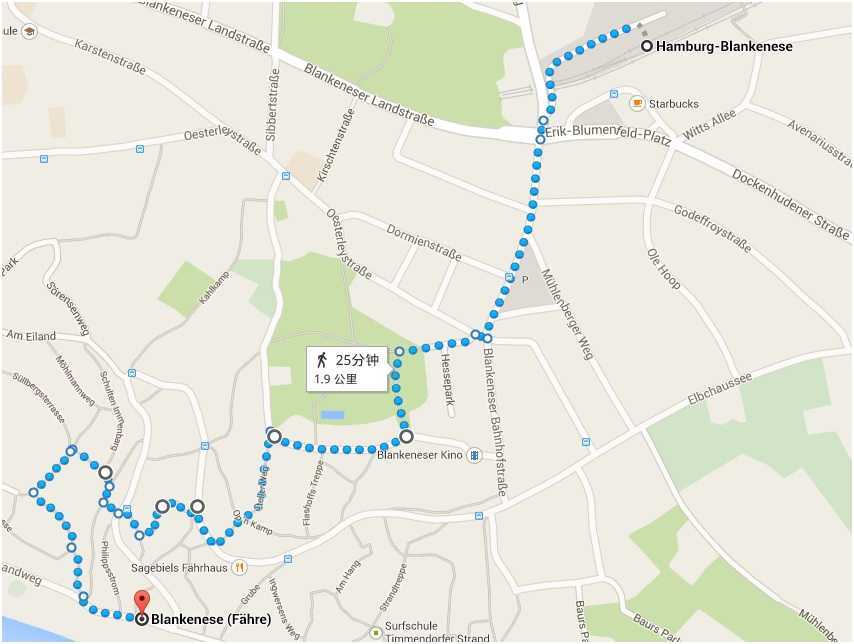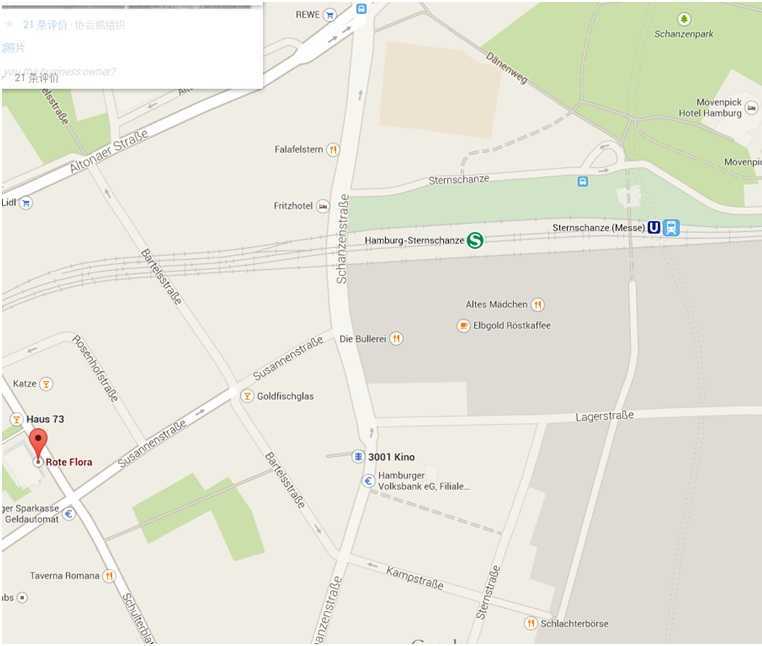标签:des style blog http os io strong ar for
The area west of Hamburg‘s central railway station is mainly a shopping area with the streets Spitaler Straße and Mönckebergstraße, leading to Hamburg‘s town hall.
The building behind the city hall is Hamburg‘s House of Commerce (Börse
). Between the buildings, there is a little place called Rathaushof with its fountain Hygieia-Brunnen. The place in front of the city hall is the Rathausmarkt, hosting many events especially in summer.
North of the Rathausmarkt, you find white arches at a canal called Alsterarkaden. The whole area behind is full of indoor shopping arcades. The most well-known one is the Hanse Viertel.
Following the canal to the right and crossing the traditional shopping road, Jungfernstieg, you quickly get to the artificial lake Binnenalster. Boat tours take you to the even bigger artificial lake, Außenalster, directly behind the Binnenalster with lots of sailing boats in summer.
From the House of Commerce into the road Börsenbrücke, you get to the house of the Patriotische Gesellschaft. Behind the building to the right, you‘ll find the bridge Trostbrücke with the statues of Graf Adolf III and Bishop Ansgar on both sides. Following the water to left, there is Hamburg‘s oldest remaining bridge, Zollenbrücke, from the 17th century.
At the other side of the Trostbrücke, there is the ruin of the church, St. Nikolai. All five main churches of Hamburg were damaged in World War II. But in contrast to the other four, St. Nikolai has not been re-erected making it a memorial against war. The steeple is still standing and visitors can take an elevator to the top for a view of the city. The price to take the elevator is € 3.5. At the side of St. Nikolai, there is the hop market (Hopfenmarkt
) with its fountain Vierländerinbrunnen.
Following the bridge over the huge street Willy-Brandt-Straße and keeping right takes you into the road Alte Deichstraße with its ensemble of traditional half timbered merchant houses and the canal Nicolai Fleet at the rear. This is the site where Hamburg‘s harbour was some centuries ago.
‘Blankenese’: Am Kiekeberg->Steiler Weg->Blankeneser Hauptstraße->Brandts Weg->Krögers Treppe->Süllbergsterrasse->Elbterrasse(House number 4-6 is a typical fisher house that was built in 1700. Around the corner follows house number 2, the oldest building in the quarter and that dates back to 1698.)-> Möllers Treppe->Strandweg

Ferry: from Teufelsbruck to Finkenwerder No.64

From Landungsbrucken to Elbphiharmonie(hafencity)


Get out Sternschanze station and walk down Schanzenstraße southward to reach the vivid center of Schanzenviertel. The Schulterblatt street with the Rote Flora building and its galore of bars and restaurants represents the center of Schanzenviertel. The Rote Flora is the last squatted house in Hamburg.

Harbour Area
At the southern end of the Alte Deichstraße, you see where the harbour moved after wards. There is a canal called Zollkanal. Looking to the left, you see the Speicherstadt, a large district of warehouses from around 1900. Some are still in use, but others have been converted to apartments. It‘s a "typical" location and worth a visit. It also houses attractions, such as the "Hamburg Dungeon" and the "Miniatur Wunderland".
Looking from Alte Deichstraße over the Zollkanal to the right, you can see the modern buildings belonging to the Hanseatic Trade Center ending to the right at the Kehrwiederspitze. Looking further right, you already see the modern harbor.
Walking in this direction takes you to the river, Elbe. At the opposite of the metro station Baumwall, there‘s Hamburg‘s city and yacht harbor (City und Sportboothafen). The big red lighthouse ship (Feuerschiff) hosts a restaurant today. Some yards further down the Elbe, you get to the Überseebrücke where formerly big cruise liners docked when coming to Hamburg. Permanently docked is the museum ship Cap San Diego, which is said to be last classic cargo ship.
Leaving the water, passing by the hyper-modern building of the Gruner + Jahr publishers, you get to the church St. Michaelis (called Michel, from the tower you‘ll have a great view over the city), Hamburg‘s well-known landmark. Close to the Michel off the road Krayenkamp the shopkeeper-office-flats (Krameramtswohnungen) are the last example of a typical 17th century housing estate.
Continuing down the river Elbe, you get to Landungsbrücken (landing bridges), the most touristy part of Hamburg‘s harbor, close to the metro station with the same name. Piers connected with several bridges swim on the water adapting to the tide. There tourism boats land and you will find tourist shops, restaurants, and snack bars. The sailing ship Rickmer Rickmers can be visited.
From Landungsbrücken, you can make boat tours into the harbour. These Hafenrundfahrten are available from various companies and take around an hour. Big ships provide more comfort, but smaller ships also go though the Speicherstadt. Both are well worth the money. Inquire about English language tours.
As a low-budget alternative for a boat tour on the river Elbe take a HADAG Ferry that is part of Hamburg‘s public transport system (HVV, see Get Around). If you have already bought a HVV day ticket, the ride is free. Most tourists take the number 62 to Finkenwerder, via the museum harbour Övelgönne. The whole ride to Finkenwerder and return takes about an hour. In Finkenwerder, you can continue with another ferry to Teufelsbrück (Line 64 which is also part of the HVV).
You can also walk through the tunnel Alter Elbtunnel from 1911 to the other side of the river Elbe and have great views from there. A lift or stairs bring you the 24 meters down into the tunnel. You then walk through one of its two 427 meter long pipes having 12 meters of water over your head. The tunnel is decorated with ceramic arts of maritime motives (e.g. fish, mussels, seals, old boots). At the other side, you again walk up the stairs or take a lift. Go out and back to the river to Aussichtspunkt Steinwerder for great views on Landungsbrücken and the sights behind. Even cars can pass though the tunnel (only M-F, 5:30AM-8PM for € 2) being brought down with four lifts. You find the tunnel at Landungsbrücken in the building having the biggest green dome. Signs toAussichtspunkt Steinwerder also point to it. For pedestrians and bicycles it is free and open all day and night, every day.
Walking from Landungsbrücken down the river Elbe takes you to St. Pauli Fischmarkt, walking further you‘ll reach Övelgönne and Blankenese (Blankenese vacation rentals | Blankenese travel guide).
标签:des style blog http os io strong ar for
原文地址:http://www.cnblogs.com/chayu3/p/3954710.html